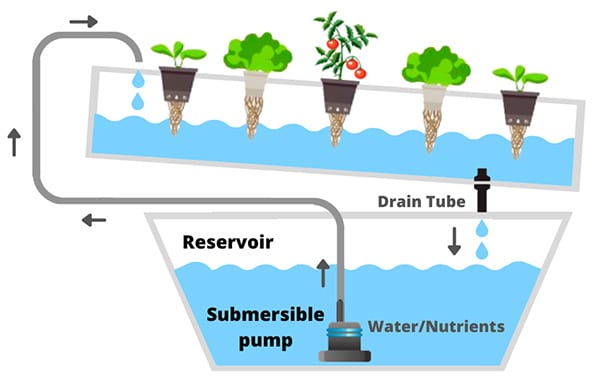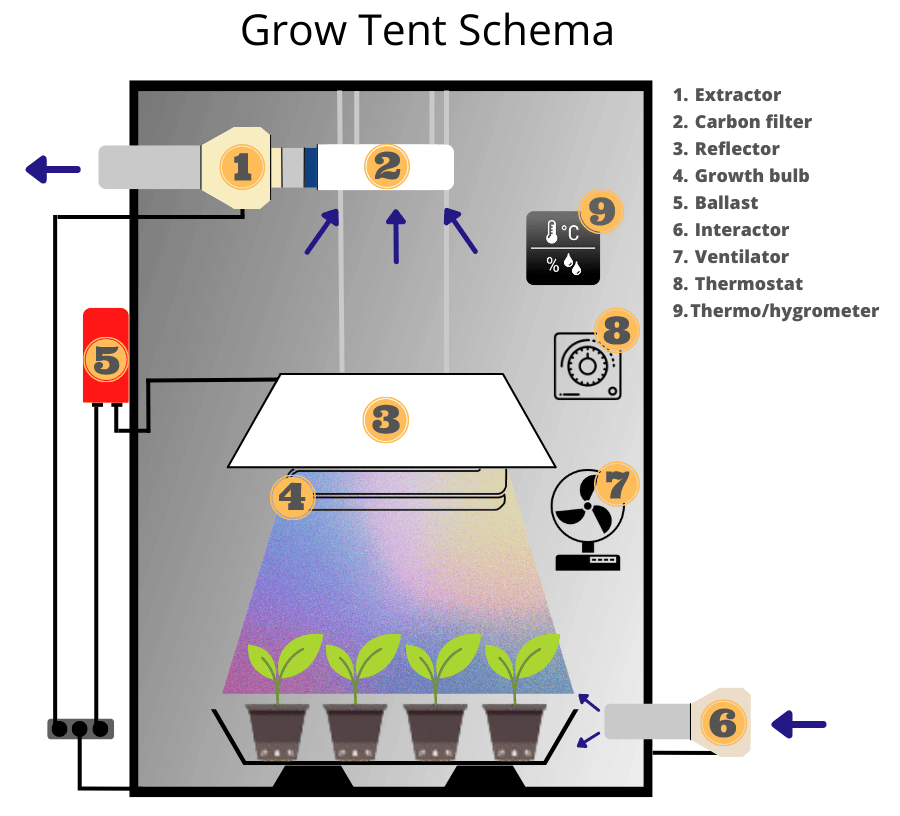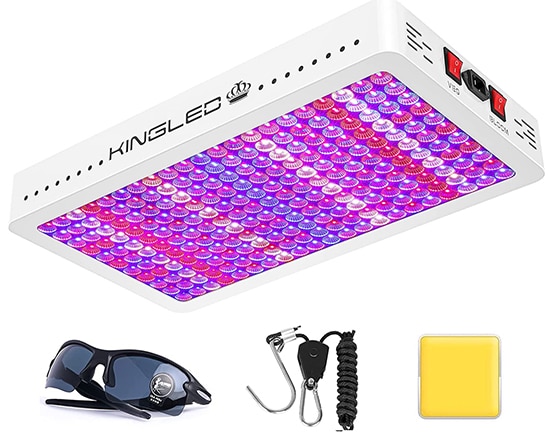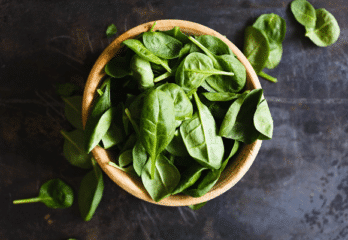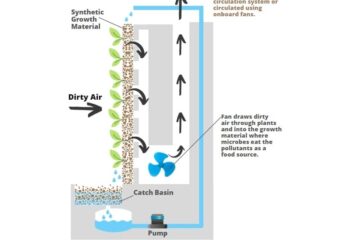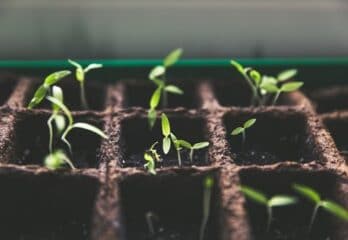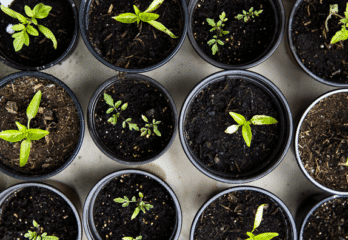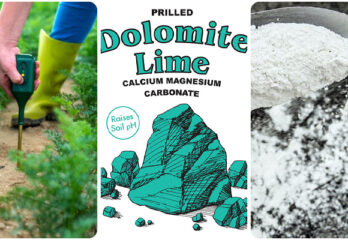Everyone wants to savor top-quality fruit, herbs, and vegetables without chemicals and pesticides all year round. But not everyone can allocate the needed area. There are several reasons why people can’t start traditional soil gardening. Some of them lack place, others possess a plot of land with inappropriate soil. Some humans are not ready to spend hours digging patches. It’s not the reason to give up the idea of becoming a cool gardener. We are ready to offer you an awesome alternative – hydroponic herb gardens.
Hydroponic farming is a revolutionary and promising technique for growing fruits, herbs, and vegetables with minimal soil usage. If you’re new to hydroponics, the following details will prove valuable. You’ll learn how to start your hydroponic herb garden and identify the necessary equipment. With step-by-step instructions, even inexperienced gardeners can easily get started, not to mention seasoned growers.
 Before you start growing hydroponics herbs, veggies, and leafy greens, you’ll need to pick the right system to start with. Here are our suggestions: Our Picks for the 5 Hydroponic Towers, Picks for the 5 Best Aeroponics Systems with Buyer’s Guides and Our Picks for the 5 Grow Tent Kits with Buyer’s Guides.
Before you start growing hydroponics herbs, veggies, and leafy greens, you’ll need to pick the right system to start with. Here are our suggestions: Our Picks for the 5 Hydroponic Towers, Picks for the 5 Best Aeroponics Systems with Buyer’s Guides and Our Picks for the 5 Grow Tent Kits with Buyer’s Guides.
What Is the Hydroponic Herb Garden?

Hydroponic systems allow you to grow herbs indoors (or outdoors). It’s about growing plants in special containers. They are to be filled with water and nutrients. Although it sounds so easy, this method has a range of peculiarities you should know about.
Hydroponics denotes a gardening system that needs minimum soil. It can be used both for commercial and private purposes. A hydroponic herb gardening is a must when it comes to avoiding gluten and toxin meals. Fans of organic fruit and vegetables get a perfect chance to savor top-quality homegrown samples. There are two major types of hydroponic systems. The first one is designed to be used indoors, while the second one can be installed outdoors.
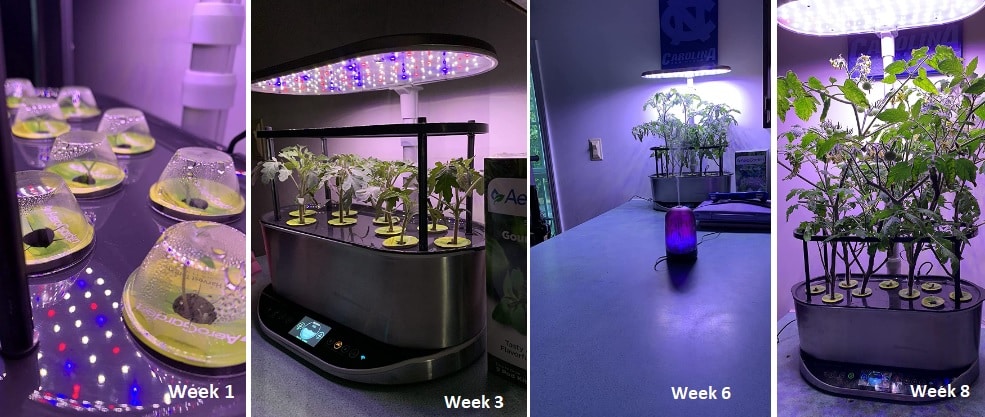
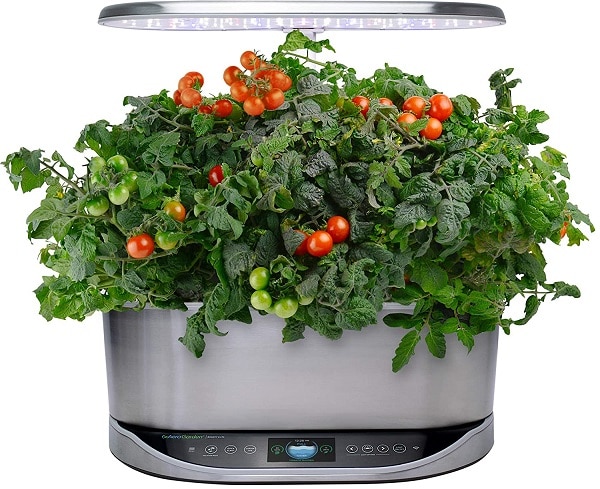 AeroGarden Bounty Elite - Indoor Garden with LED Grow Light
AeroGarden Bounty Elite - Indoor Garden with LED Grow Light
- WiFi and Alexa Compatible, Stainless Steel Grow up to 9 plants, up to 24duim
- Includes everything you need to grow
- 50 watt LED Grow Lights, perfect spectrum for fast growth & big harvests
The major peculiarity of the hydroponic herb garden is that it makes it easier for herbs to get the needed water and nutrients. The growing medium is used instead of soil. The most popular solutions for growing medium include coco coir, gravel, sand, sawdust, perlite, expanded clay pellets, rockwool, and soilless mix. When selecting an ideal option for your hydroponic herb garden, it’s necessary to consider the water holding capacity of the medium, air-filled porosity, and cation exchange capacity.
It’s also necessary to pick up the most suitable system of a hydroponic herb garden.
Six Possible Options to Organize a Hydroponic Garden
-
Wicking model
It’s a basic model for a hydroponic herb garden. Special wicks are used to deliver water and nutrients to the plants. It’s passive hydroponics. It means no pumps are needed. Wicking models are a good solution for herbs. It provides you with the option of hands-free gardening. If the issue of cost-effectiveness is of crucial importance for you, it’s a perfect solution. Yet, failing to maintain the integrity of the wick will kill your herbs.
-
Deepwater culture model
We recommend this system if you are looking for the easiest model to maintain. It implies the use of a reservoir filled with water and a nutrient solution. This system implies the application of an air pump. You don’t need to pick up this option when cultivating herbs with a significantly long growing period.
-
Nutrient film technique
This system implies that herbs are grown in a nearby channel. Both air and water pumps are needed. It’s a good example of a low-waste recirculating system. The growing medium is not necessary. The major difficulty with this model is the necessity to carefully control the water balance. Otherwise, the pipes may be clogged.
-
Ebb and flow variety
This system floods your herb with the needed nutrients on a cycle. An air pump is a must to oxygenate the moisture. It’s a perfect option for growing herbs with similar needs.
-
Aeroponics model
It’s the most innovative and expensive model. It implies that both herbs and their roots are suspended in the air. The water is sprayed. There are two possible cycles – non-stop and with stops.
-
Drip model
It’s an awesome solution for commercial purposes. All the plants are located in channels. Both air and water pumps are needed. The system allows you to fully control the schedule of feeding.
Major Benefits of a Hydroponic Herb Garden

Although a hydroponic herb system is a rather innovative invention, it gives gardeners several significant perks.
-
It saves space
One of the major obstacles on the way to the dream garden is the absence of space. Not everyone is able to buy a house with a spacious patch. For hydroponic herb gardens, minimal room to place pots or hydroponics systems is enough. Equipment may be located in a separate room or even in the kitchen.
-
It helps to save water
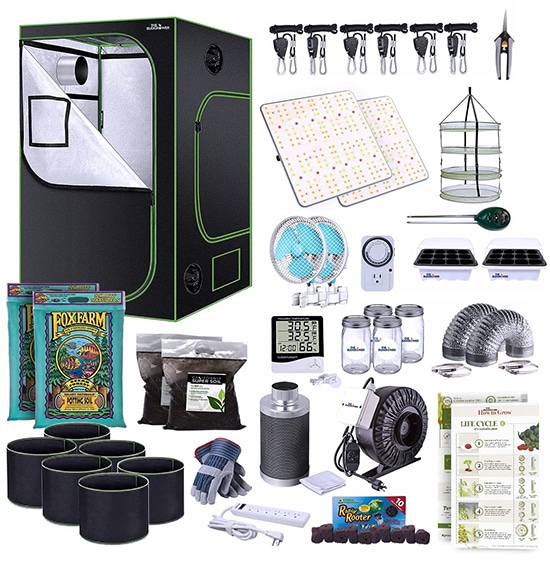 TheBudGrower Complete All-in-One Home Grow Solution 4x4x7ft- 2200W(2)
TheBudGrower Complete All-in-One Home Grow Solution 4x4x7ft- 2200W(2)
- LED lights specialty manufactured by VIVOSUN with Samsung LM301 diodes for FULL spectrum light
- The industries most durable grow tent – heavy duty 1680d oxford cloth
- Money & energy saving complete home grow tent kit
Being an active supporter of the eco-friendly way of living, you can’t help but appreciate the fact that hydroponic gardens can get re-circulated water. The expenditures you should pay to cover the water use are also reduced. It benefits your budget.
-
All-year-round fresh herbs
The greatest perk is the possibility to consume fresh herbs for 12 months per year. Indoors, it’s possible to create the needed conditions for hydroponics anytime. In case you prefer the outdoors, there are some restrictions depending on the climate peculiarities of the area you live in.
-
No weeds
Everyone who has ever had a traditional soil garden knows for sure how difficult and exhausting it is to get rid of annoying weeds. While there is no soil, there are no weeds. You don’t need to worry that undesirable plants will appear next to your lettuce or parsley.
-
Fewer chemicals
While weeds are not the problem for hydroponics, you don’t need to use pesticides or chemicals to get rid of them. Some gardeners still use fertilizers to make the process of herb growing more successful. Yet, when it comes to residential hydroponics, you may avoid the use of any chemicals at all.
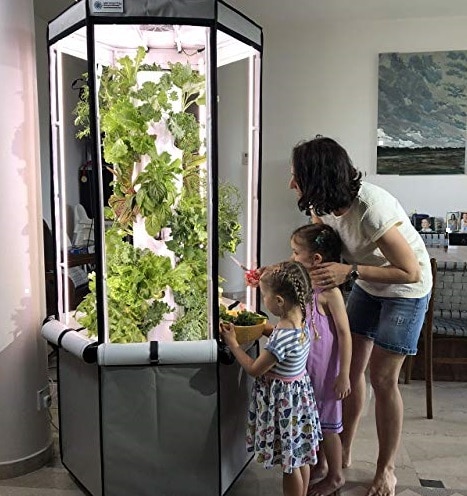
 Aerospring 27-Plant Vertical Hydroponics Indoor Growing System
Aerospring 27-Plant Vertical Hydroponics Indoor Growing System
- Easy to use aeroponic system for your home
- Fan - Grow Lettuce, Herbs, Veggies & Fruits
- Grow smart & eat healthy, 20 gallon water reservoir Grow Tent, LED Grow Lights
-
You save your time and effort
You get this perk only if you install the hydroponic system in the right way. Otherwise, you are to experience serious difficulties in both maintaining herb gardens and gathering harvests.
How to Make a Hydroponic Herb Garden

Now, you know the major peculiarities of hydroponic herb gardens. The next crucial question you need to know the answer to is “How to start a hydroponic garden?” Below, you will find detailed instructions and useful tips.
How to Start a Hydroponic Herb Garden
When deciding to start your home herb hydroponic garden, it’s necessary to install all the elements in the right way. Otherwise, it won’t work. There are two possible ways to install a hydroponic system. The first one refers to professional hydroponic gardens that you can buy. Everything you should do is follow detailed instructions. The total time you spend on installing may vary from 30 minutes to 3 hours depending on the size and complexity of the system.
To start a hydroponic herb garden, you should consider the following aspects:
-
Light
If you want to be a really successful gardener, provide your plants with at least 12 hours of light per day. You can use both bright light and indirect light sources. It should be highlighted that darkness is as important as lighting. Plants have to experience up to 12 hours of darkness every day. It’s a perfect idea to control the lighting schedule with the help of an automatic electric timer.
-
Substrate materials
There are copious available variants. You should prepare the needed amount of materials depending on the size of the garden you are going to construct. Coconut coir is a perfect solution when it comes to excellent air and moisture retention features. Organic soil represents an awesome mixture of useful elements, both synthetic and natural. Mats are helpful when it comes to the stabilization of plants. It’s a big mistake to think that mats create restrictions on the herbs. Actually, they don’t. Moreover, they help to prevent light contamination. Compressed bricks are good for stable storage and transportation of hydroponic herbs. Plugs and pellets meet the needs of cuttings and seedlings.
-
Water
It’s not a good idea to use water just straight from your water supply line. You need 98-99% pure moisture. A perfect solution is the use of reverse osmosis water. The plants may die if the quality of the water is ignored.
-
Nutrients
It’s better to apply a balanced pack you may find on the Net or in supermarkets. It’s necessary to use such nutrients as Nitrogen (responsible for fast growth), Calcium (responsible for cell formation and its strength), Sulfur (responsible for plant formation). Zinc is an essential element for growth regulation and stem elongation. It’s not the whole list of nutrients.
Construction
You need a list of materials you should use to assemble a hydroponic garden. It includes the following items:
- Bucket or basin as a water container
- The source of light
- Water
- Fertilizers for hydroponic gardens
- Cotton or nylon cord
- Growing medium
- Seedling
- Growing tray
It’s also necessary to prepare a drill or screwdriver.
When it comes to a homemade system, take several steps.
Making a Hydroponic System at Home
-
Setting up the water reservoir
It depends on the type of hydroponic system you’ve chosen, the size, form, and peculiarities of the reservoir. First, set it up and fill it with water. The greater part of containers allows you to use the same water several times.
-
Add nutrients
The next step is to add nutrients to the reservoir. Unlike water, they can’t be used several times. You should restore nutrients on an everyday basis.
-
Aeration
You need to realize that proper aeration is a must for efficient oxygenation and nutrient circulation. There are several ways to provide herbs with oxygen. The first one is to use an air stone. It’s an awesome hobby option. It’s necessary to connect the stone with an air pump. The bubbles produced by the stone are rather large. We recommend choosing the stones carefully as they are rather breakable.
The next way to provide herbs with the needed level of oxygen is to use a diffuser tube and ring. This method allows creating smaller bubbles, which are good for different root systems.
Using an automatic siphon is more convenient. This method is more often used in the ebb and flow of aquaponic systems. Yet, it’s possible to implement this method in other variations. Plants get air automatically.
Pay attention to the right choice of a nutrient solution.

Such components as the water quality, the set of necessary nutrients, the nutrient balance, and the proper pH level are of prime importance.
-
Installing a growing tray or chamber
The types of containers differ from system to system. To connect the tray, you may apply tubes or channels. Before installing, it’s necessary to wash and dry the pot.
-
The next step is to assemble lighting
While it’s almost impossible to grow herbs only hydroponically with the help of natural light, you will have to install a lighting system. To avoid damage to the plants, it’s necessary to place LED lamps 6 and 12 inches apart from the herbs.
-
Adding growing media
There are several options. You don’t need to use too much or too little materials.
-
Planting herbs
After everything is prepared, it’s high time to place herbs. It’s better to plant seedlings than seeds, and it’s necessary to make special holes for seedlings. It’s better to drill eight 2” circular holes.
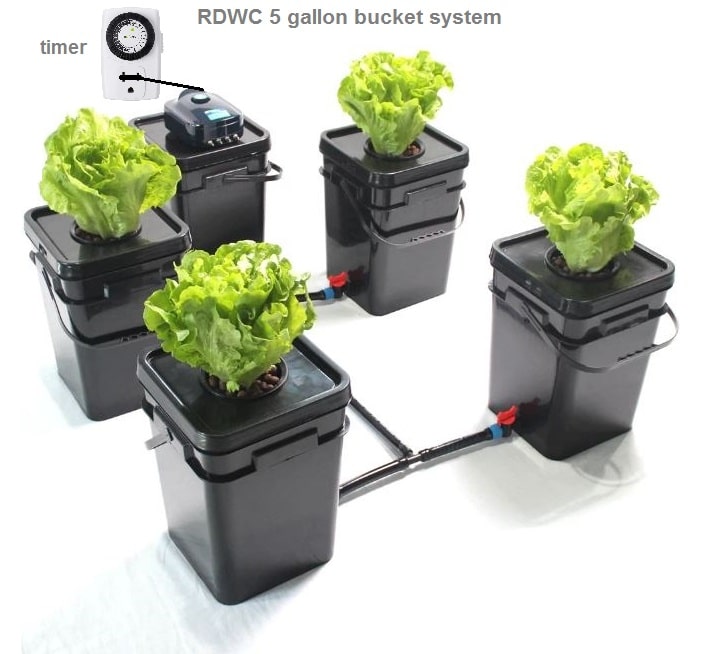
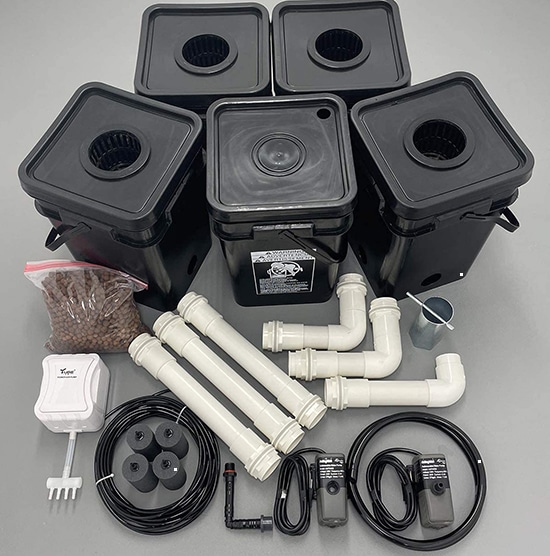 Recirculating Deep Water Culture (RDWC) Hydroponic Grow Kit System
Recirculating Deep Water Culture (RDWC) Hydroponic Grow Kit System
- Reservoir Bucket Connected to 4 Grow Buckets
- 400 Gallon/hour Circulating Pump
- Large 5 gallon square buckets, pre-drilled
Taking Care of the Garden
Although a hydroponic herb garden is a relatively simple way to get fresh herbs, it doesn’t matter if you shouldn’t take care of it. It’s necessary to monitor the species’ growth. Make sure that the roots are well-nourished.
You should carefully control possible water leaks. There are two possible causes – evaporation and breaks in the system. It’s necessary to check the system regularly to avoid breakages. The care options may differ depending on the type of growing medium.
Aspects to Check On a Regular Basis
-
Humidity
Herbs need essential moisture. An ideal solution is from 40 to 60 percent relative humidity. Yet, it’s necessary to alter the level of humidity during the growing season. It should be highest during the vegetative stage and the minimum when harvesting.
-
Temperature
It’s important to maintain the temperature between 68ºF and 77ºF. In case it’s impossible to create the needed temperature, try to use cooling options. They may include ice packs, cool water, and chillers.
-
Light
Automated lighting systems are your best helpers. They are able to switch on the light even if you are not at home. It’s better to combine both natural and synthetic light.
-
pH level
It’s a crucial trait for hydroponics. The most suitable levels are between 5.5 and 6.0. To maintain the needed pH level, it’s necessary to buy a special tester. The levels may be altered because of the nutrients you use. There are special pH up and down products. They allow you to create the needed conditions as soon as possible.
Conditions of the plants
It’s necessary to monitor the state of the herbs. If they are too faded or are not excessive green, you should figure out what’s wrong. If the herbs grow too fast, they may need extra anchoring.
The quality of the nutrient solution
While it’s necessary to add new nutrients almost every day, the storage may be depleted. You need to control whether the plants receive the needed amount of useful elements and minerals.
BONUS: Which Plant Food for Hydroponic Herb Garden
If you’re afraid that the assortment of plants that can be grown hydroponically is quite limited, here the good news comes. You will definitely achieve great success in growing the following species:
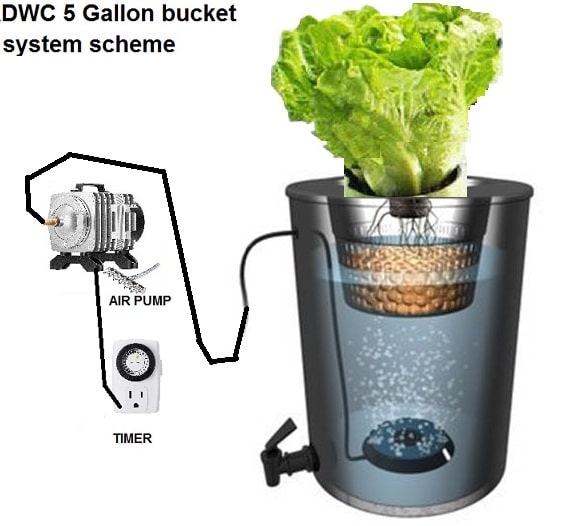
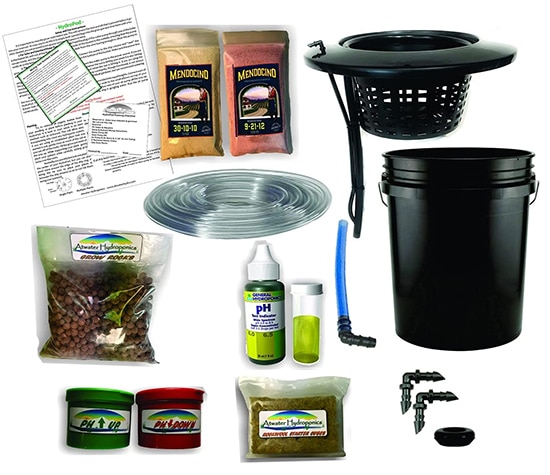 The Atwater HydroPod - Standard A/C Powered DWC/Recirculating Drip Hydroponic Garden System Kit
The Atwater HydroPod - Standard A/C Powered DWC/Recirculating Drip Hydroponic Garden System Kit
- Most efficient use of water compared to traditional gardening
- Dual outlet air pump, Nutrients are Included!
- Kit contains everything you need to start your own garden (minus plants and water!)
-
Lettuce
We strongly recommend you start your hydroponic gardening experience with this herb. You may try such varieties as Iceberg, Bibb, Romaine, and some others. While growing lettuce, there is no need in setting guides for the plant as it has a shallow root system. It takes about 30 days to gather your first harvest.
-
Strawberries
Start your garden from runners, not from seeds. You are to spend up to 60 days before you savor sweet berries. We recommend trying such options as Tioga, Red Gauntlet, Brighton. An ideal hydroponics method for strawberries is an ebb and flow one.
-
Spinach
The best way to grow juicy spinach in no time is to use the nutrient film technique. It’s possible to start plants even from the seeds. It takes about 40 days to get the first harvest. It’s a good idea to maintain a temperature between 65 to 27 degrees to accelerate the growth speed. The most promising varieties include Savoy, Cataline, Red Cardinal, and some others.
-
Bell pepper
There are several rules you should follow to get a harvest. Peppers need up to 18 hours of light per day. They need about 90 days to mature. Prune plants to achieve maximum results. We recommend starting from such varieties as Ace, Vidi, and California Wonder.
-
Cherry tomatoes
We recommend starting from cuttings. Although tomatoes need extra care, it’s still a good idea to grow tomatoes hydroponically. We recommend trying such varieties as Trust, Queen, and Blitz. To get a good harvest, it’s better to use nutrients and air pumps.
-
Basil
Basil can grow and mature in any hydroponic system. You should be ready to provide herbs with regular pruning and harvesting. An ideal temperature for basil is between 65-80 degrees.
-
Rosemary
It’s necessary to grow rosemary with a temperature between 75-84 degrees. Rosemary also needs light fertilizing from time to time. As for the light, the plant needs at least 11 hours of it per day.
-
Mint
When growing mint hydroponically, you should remember that it sprouts from the roots. It’s a cool idea to use small bubble buckets to grow this herb. Both NFT and ebb and flow systems are also good.
At the same time, you should know which plants are not the best choice for this way of gardening. You won’t get a good harvest of potatoes and sweet potatoes. These plants have extensive root systems. It’s impossible to pick up a proper container that meets the needs of species. The same is true about big root vegetables.
FAQ:
Can You Grow Herbs in a Hydroponic Garden?
There are lots of plant species that can be grown in a hydroponic garden. Herbs are an ideal choice of plants. Yet, herbs that are grown hydroponically may look a little bit different than ones grown in soil. Hydroponics is a perfect solution for both culinary and medical herbs. They need little space and are fast-growing. Hydroponics is a quite convenient and captivating way to grow herbs just on your window sill.
How Do You Start a Hydroponic Garden at Home?
There are only several steps you should take to start a hydroponic garden at home. The first step is to choose plants you want to grow. It’s necessary to pick varieties that are good for hydroponics. The next step is to choose a proper hydroponic system depending on the types of plants you’ve selected. Then, you’re to choose a light source, grow medium, nutrients, and supplements. It’s also necessary to buy a pH meter. After you get all the equipment, you can add nutrients and start launching a system.
What Is the Best Hydroponic Herb Garden?
There are lots of awesome options you may find on the Net. Aerogarden is an ideal choice for those who are interested in dirt-free gardening and cool harvests. You may choose a system with a multifunctional panel, copious modes, and various capacities. It’s up to you to choose the best garden solution that meets your needs and expectations.
Do Hydroponic Herb Gardens Work?
A hydroponic herb garden really works. It allows you to grow herbs of various types without soil. Yet, to get the harvest, you need to create the necessary conditions to make plants mature. You should remember that a hydroponic needs regular control and militance. You’re to provide plants with the proper amount of light, nutrients, and water. Remember to check regularly whether the system works well.
What Herbs Grow Well in Hydroponics?
Almost all herbs grow well in a hydroponic garden. Experienced growers know for sure that there are some herbs that need less time and effort. The list of the most promising herbs includes basil, dill, anise, catnip, oregano, chamomile, rosemary, and cilantro. At the same time, herbs with large root systems are not a perfect option for hydroponics. It’s necessary to select varieties with small and short roots that do not sprout.
Can I Plant Hydroponic Herbs in Soil?
If you change your mind and decide to start gardening in soil, it’s possible to add hydroponic herbs from containers to the soil. YProvide significant care both during and after the transportation for herbs to survive. It’s a good idea to transfer herbs if they grow too fast and need more and more space. You may place plants into the pot with soil if you’re going to sell samples.
How Do You Harvest Hydroponic Herbs?
When your herbs are large enough to use in meals, you can harvest the plants. There are two possible ways to do this — with roots or without. If you do not leave roots, you may sell samples or end hydroponics gardening. The second option is good if you want to gather one more harvest. Before you harvest herbs, you should mist plants. It’s also possible to harvest not the whole plant but separate leaves.
Why Is Hydroponics Expensive?
You have to realize that hydroponics needs significant initial investments. It will need you to pay for each square meter of the system. If you pick innovative self-controlled systems with sensor panels, you’re to pay more. It’s also necessary to buy grown media and nutrients. Moreover, successful hydroponic gardening is impossible without a good lighting system. It’s pretty expensive too. Yet, only initial investments are so significant. Further use is rather cost-effective.
Are Hydroponically Grown Vegetables Healthy?
When it comes to homegrown hydroponic gardens, you may be sure that berries, fruit, and vegetables are absolutely healthy. While there are no weeds, you don’t need to use chemicals. Yet, when it comes to commercial hydroponic gardens, growers may add fertilizers or even pesticides to accelerate the growth speed. At the same time, it’s up to you to decide which nutrient your plants will include as it’s you who adds nutrients to the system.
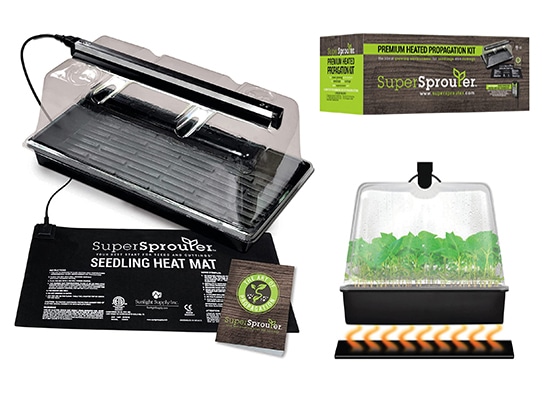 Super Sprouter Premium Propagation Kit with Heat Mat, 10
Super Sprouter Premium Propagation Kit with Heat Mat, 10
- Dome & T5 Light, 5 Piece, Black/Clear
- Art of Propagation booklet with expert advice for starting seedlings and cuttings
- Super Sprouter Seedling Heat Mat 10 in x 21 in is ETL listed
Conclusion
To sum everything up, a hydroponic herb garden is a perfect way to consume fresh salads or parsley whenever you want. The hydroponic system has several peculiarities. We’ve provided you with as clear and accurate information about this type of gardening as possible.
We hope you’ve enjoyed the article. If there are still some questions left you failed to find the answers to, please let us know.
